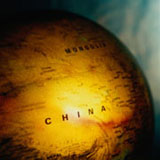Executives at Germany’s auto companies were flustered. They knew that China is among the world’s fastest-growing markets for vehicles — likely in a few years to overtake Japan as the second-largest after the U.S. Their efforts to tap its potential, however, were being constantly stymied by factors such as variations in regional tariffs among the country’s 27 provinces and the inability of local suppliers to meet quality standards for components. In the spring of 2004, Volkswagen, Audi, DaimlerChrysler and BMW chose to take matters into their own hands. Recognizing that these problems were too massive to tackle individually, the companies formed a joint logistics partnership called Coreteam to deal with logistics and supply chain issues. As a BMW executive told a reporter, though the German automakers competed with one another, it also made sense for them to collaborate and exploit synergies when they could.
The experience of the German auto companies serves as a metaphor for the logistics challenge that confronts global organizations seeking to do business in and with China. According to consultants at The Boston Consulting Group and Wharton professors, today the capabilities of China’s logistics sector are much greater than they were in the past. Chinese shippers are maturing, and big western firms such as UPS and DHL have begun to ramp up their activity. Western entrepreneurs also have jumped in to fill gaps between the manufacturing and retail sectors. Even so, China’s booming economy continues to outstrip the growth of its logistics capabilities. China is growing so fast that, in some regions, it is straining the capacity of its roads, railways and ports and testing the limits of its still-young shipping companies. The bottom line implication: As companies draw up operations plans for China, they need to place much greater emphasis on logistics than they might in a developed country.
Jeff Bernstein, a Wharton grad who arrived in China nine years ago as a management consultant, has witnessed this evolution first hand. A decade ago, few trucking companies were capable of doing multiple deliveries from a single load. Having grown up in a communist command economy, many were accustomed to taking full loads to where bureaucrats ordered them to, not where customers wanted the goods, says Bernstein. Shippers would pack their trucks haphazardly and secure their freight with a mess of ropes and tarps that could be untangled only at the final destination. As a result, foreign multinationals operating in China were forced to carry higher levels of inventory than comparable firms in the U.S. and Western Europe. While that tied up cash, it also ensured that they would have supplies and products when they needed them. Inevitably, however, it also meant lots of obsolete inventory and wasted money.
“There are chokepoints in the system,” says Marshall Meyer, a Wharton management professor who studies Chinese firms. The highway network has only been partly built out; China’s highways are less than a third the length of the United States’, though the two countries are nearly the same size. Some regions have good roads. Others have substandard ones. Trains are more geared to carrying people than freight.
Ports, too, have clogged because so much traffic is flowing through them, says Thomas Bradtke, a manager in the Boston office of Boston Consulting Group. In fact, China is growing so robustly and exporting so much that ports on the West coast of the United States are becoming jammed too. “Everybody is wondering how to improve the thru-put at Long Beach [Calif.] and Portland [Ore.],” he says.
China’s congestion is exacerbated by the fact that the country’s logistics infrastructure is more fragile and disorganized than that of Western countries. “A major issue is poor asset quality,” says Bernstein, who left his consulting job to create Emerge Logistics, a Shanghai-based company that works with western industrial companies. “Trucks are prone to break down and clog roads. On a unit basis, shipping costs may seem lower than in the West, but there’s a huge cost to the macro economy.”
Fragmentation Adds to Costs
Atop that, the logistics industry is fragmented, with more than 2 million trucking companies in a country with between 5 million and 6 million trucks, says Udo Jung, a vice president in BCG’s Frankfurt, Germany, office. Combine delays, red tape and the administrative costs of dealing with scads of small shippers, and Western multinationals can expect about 20% of the costs of their Chinese operations to be logistics-related, compared with an average of about 10% in the West, Jung says.
“If you have to transport something a long way, you often have to switch logistics providers, and they don’t have seamless integration, so there’s lots of paperwork,” he explains. “Also, different provinces have different regulations — you might call them nontariff trade barriers. Some provinces have regulations on how to label your product if it’s imported. These add to the logistics costs.”
Shipping goods from China to the West typically takes about six weeks, says Hal Sirkin, a senior vice president and leader of BCG’s operations practice. That’s longer, obviously, than shipping from Mexico to the U.S. or from Eastern to Western Europe. As a result, foreign multinationals that want to succeed there have to be willing to pony up occasionally for airfreight. “Even if the cost difference is large, you’ve got to be ready for an emergency,” he says. “You can shorten the supply chain to two or three days that way.” One way to ease at least some logistics hassles is to locate a China operation near its suppliers, he points out.
A few Western multinationals have responded to China’s logistics challenges by expending time, talent and treasure to construct their own logistics networks. Take Louisville, Ky.-based Yum! Brands, which owns KFC, Pizza Hut and Taco Bell, among other restaurants. According to media reports, Yum! has built 18 distribution warehouses in China and owns its own fleet of trucks. This system ensures that Yum!’s more than 1,200 restaurants there get everything they need, from perishables to takeout containers, on time.
For many companies, that sort of commitment hardly makes sense. They are therefore left to rely on outside logistics providers. Illinois-based Kraft Foods found itself in that position. Kraft, whose products include Oreo cookies and Maxwell House coffee, owns its China warehouses but contracts with local companies for distribution to retailers, reports the Far Eastern Economic Review. It prefers to hire mid-sized, as opposed to large, vendors to ensure that it gets the best service. With a mid-sized company, Kraft knows that it’s the most important customer and will be treated accordingly.
If a foreign multinational does decide to go with an outside logistics provider, picking the right vendor is critical. The first decision is choosing between a Chinese company and an international one. “A Chinese partner will be cheaper and will have local knowledge and may have at least regional network coverage,” explains BCG’s Jung. “But it can fall short in IT systems, standardized operations and relationships with key international shippers.” Initially, a foreign multinational might want to split its business between a Chinese company and an international one and see which one performs better, Jung says.
Once you find a reliable provider, problems still can crop up. Not all Chinese shippers have worked out the puzzle of delivering partial loads to multiple cities from a single truck, Bernstein says. Ideally, a shipper will consolidate your load with others headed to the same region. Instead, some shippers farm out freight to other companies. When that happens, goods sometimes get lost. Red tape remains a problem, too. “Some provinces won’t let trucks from other provinces enter certain cities, so shippers still have to unload even if they have full loads,” Bernstein explains.
Even if a delivery arrives in the right city and is admitted, obstacles can arise that are rare in the U.S. and Europe. “They may get there and can’t figure out where to deliver to,” Bernstein says. “It’s not like the U.S. where every address is something that you can verify on the Internet. In the countryside, typical addresses may not even be used.” Faced with these sorts of challenges, either your staffers or your logistics contractor have to keep close tabs on your freight and develop good relationships with shippers. “You have to follow up,” Bernstein stresses.
BCG’s Jung elaborates: “As you plan your China operations, you have to put more emphasis on the logistics chain compared with what you might do in a developed country. You can’t take anything for granted. Things that you might not think about in a developed country, like requirements for road transportation, have to be explicitly elaborated upfront.”
Tiers of Wholesalers
Another challenge is dealing with China’s three-tiered system of wholesalers, a vestige of its old state-planned economy, says Wahid Hamid, a vice president in BCG’s New York office who previously worked in Hong Kong. In the past, a foreign multinational that wanted to reach Chinese consumers had to send goods through the state-owned wholesalers, Hamid says. “You had the first tier in the provincial capitals and large cities, the second tier in the smaller cities, and the third in the towns.” Today, the Chinese government no longer requires that, but many companies continue to use the distributors because they are well established, if inefficient.
When a company turns its products over to the distributors, it can lose the ability to “see” into its supply chain, Hamid notes. “You can’t forecast without visibility. So you can put your factory through huge gyrations. Without good information, it drives significant volatility into the supply chain.” As a result, foreign multinationals in China have to develop their own means of tracking their products and quickly collecting information on consumer demand. “You have to develop systems that work through the wholesalers — you have to train or incentivize them — or teach your sales force to capture the data.”
Though China’s logistical system is byzantine compared with the West’s, plenty of westerners are developing the expertise to make it work to their advantage. For example, at Emerge Logistics, Bernstein recently faced a daunting job. A U.S. motorcycle maker needed to have one of its premium bikes imported quickly into Shanghai. The police force there was pondering the purchase of big, powerful motorcycles for use in motorcades. It already had agreed to evaluate offerings from German and Japanese suppliers as the deadline for consideration neared. “The process should have taken about a month, but we had a couple of days to get all the approvals,” Bernstein recalls. “We were giving our presentation to the Shanghai police even before the motorcycle was completely out of customs. We rushed it in right before the police department closed for the day.”
Interestingly, expediting the import of the motorcycle did not demand skills that were much different from those required for dealing with bureaucrats in any country, developed or developing. It called for a familiarity with the bureaucracy, the anticipation of problems and the refusal to take no for an answer. “We had people go to the agencies and sit there until the thing was done, and if there were questions, we responded immediately,” Bernstein explains. “The key for us is to dissect the process and make sure things don’t fall through the cracks.” Those are words of advice that might well apply to every international organization that has to deal with the logistics challenge in China.



